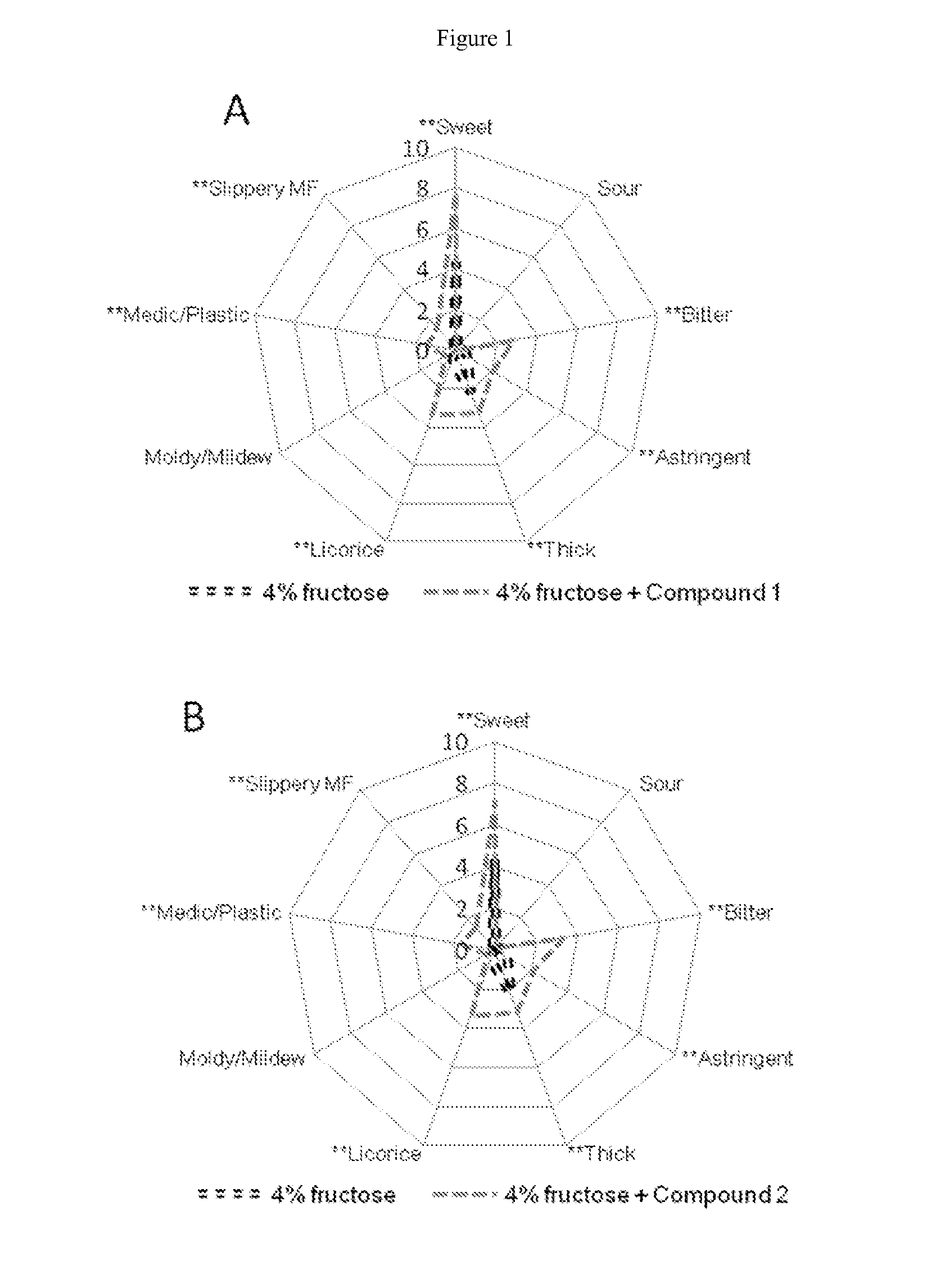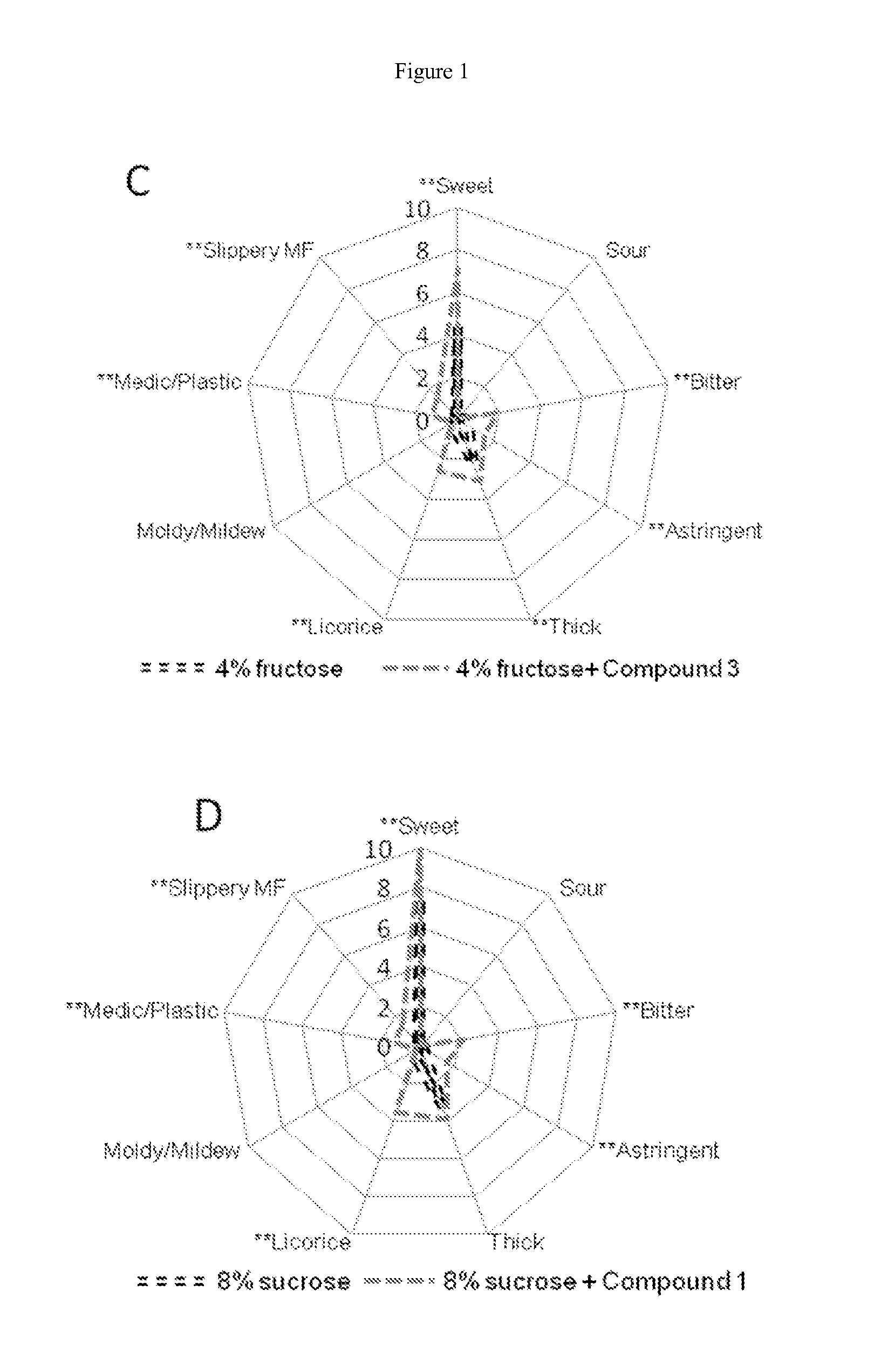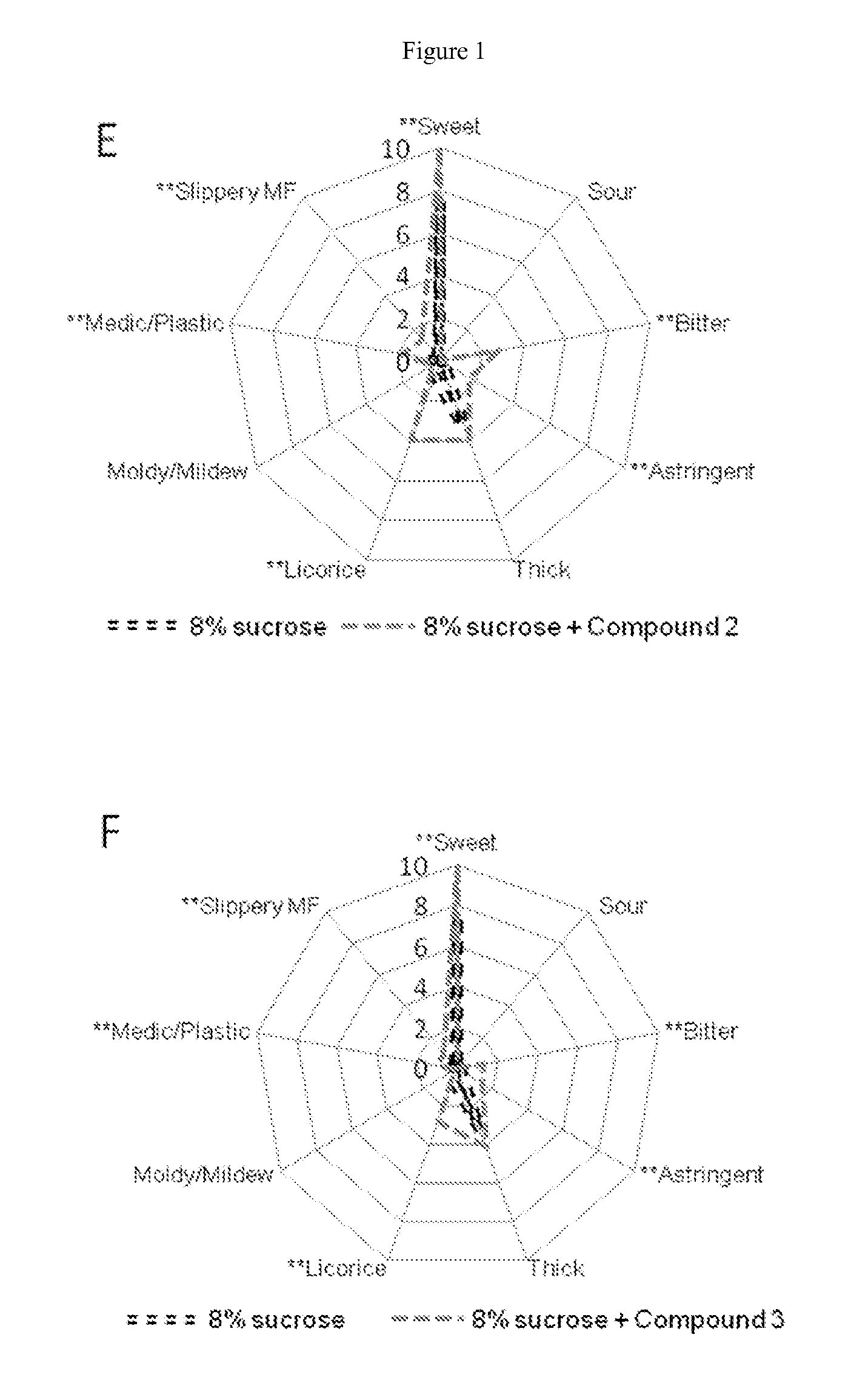Compounds, compositions, and methods for modulating sweet taste
a composition and sweet taste technology, applied in the field of flavor in edible compositions, can solve the problems of limited sweetener level of caloric and non-caloric sweeteners in foods, use of artificial and natural high-potency sweeteners to reduce the level of caloric and non-caloric sweeteners, etc., to achieve the effect of enhancing sweet taste, modulating or potentiating the sweet taste of edible compositions, and reducing the amount of sweeteners
- Summary
- Abstract
- Description
- Claims
- Application Information
AI Technical Summary
Benefits of technology
Problems solved by technology
Method used
Image
Examples
example 1
Effect of Test Compounds on the Perception of Sweet Taste of Sucrose and Fructose by Ranking
[0563]The effect of the test compounds on the perception of the sweet taste of an aqueous solution of sweetener in humans was evaluated using a ranking “sip and spit” method.
Preparation of Samples for Sensory Taste Tests:
[0564]The aqueous sweetener solutions were prepared by adding, fructose, sucrose or glucose (by weight), to water to achieve the desired concentration.
[0565]Compounds were first prepared as a 500-fold concentrated stock solution in 100% ethanol. These concentrated stocks were then added to the aqueous sweetener solutions to result in a final ethanol concentration of 0.2%. The control (positive and negative) samples were also normalized to 0.2% ethanol. This level of ethanol was not seen to contribute any perceived sweetness.
Sensory Methodology: Assessment of Sweetness Perception Using Ranking Method
[0566]In the ranking test used for compound evaluation, taste panelists (n=15)...
example 2
Effect of Test Compounds on the Perception of Sweet Taste of Sucrose, Fructose and Glucose Two-Alternative Forced Choice Method (2AFC)
[0569]The effect of the test compounds on the perception of the sweet taste of an aqueous solution of sweetener in humans was evaluated using a two-alternative forced choice “sip and spit” method (2AFC).
Preparation of Samples for Sensory Taste Tests:
[0570]The aqueous sweetener solutions were prepared by adding, fructose, sucrose or glucose (by weight), to water to achieve the desired concentration.
Compounds were first prepared as a 500-fold concentrated stock solution in 100% ethanol. These concentrated stocks were then added to the aqueous sweetener solutions to result in a final ethanol concentration of 0.2%. The control (positive and negative) samples were also normalized to 0.2% ethanol. This level of ethanol was not seen to contribute any perceived sweetness.
Sensory Methodology: Assessment of Sweetness Perception Using 2AFC Method
[0571]The 2AFC t...
example 3
Inherent Sweetness Assessment
Preparation of Samples for Sensory Taste Tests:
[0574]The aqueous sucrose solutions were prepared by adding, sucrose (by weight), to water to achieve the desired concentration.
[0575]Compounds were first prepared as a 500-fold concentrated stock solution in 100% ethanol. These concentrated stocks were then added to water to result in a final ethanol concentration of 0.2%. The control (including positive control) samples were also normalized to 0.2% ethanol. This level of ethanol was not seen to contribute any perceived sweetness.
Sensory Methodology: Inherent Sweetness Assessment
[0576]The intrinsic effect of test compounds on the perception of sweet taste, in an aqueous solution, in humans was evaluated using a difference from control “sip and spit” method employing a verbal category scale.
[0577]In this method, panelists (n=12) evaluate one pair of samples at a time—one sample contains water plus compound (i.e. test) while the other contains water without c...
PUM
 Login to View More
Login to View More Abstract
Description
Claims
Application Information
 Login to View More
Login to View More - R&D
- Intellectual Property
- Life Sciences
- Materials
- Tech Scout
- Unparalleled Data Quality
- Higher Quality Content
- 60% Fewer Hallucinations
Browse by: Latest US Patents, China's latest patents, Technical Efficacy Thesaurus, Application Domain, Technology Topic, Popular Technical Reports.
© 2025 PatSnap. All rights reserved.Legal|Privacy policy|Modern Slavery Act Transparency Statement|Sitemap|About US| Contact US: help@patsnap.com



